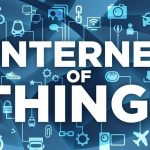Today, the Internet of Things (IoT) has touched every aspect of our lives- from our bodies to our home and our workplaces to a fully connected world. IoT has quickly become a massive part of how people live, communicate, and do business. Across the globe, web-enabled devices are turning our world into a more connected place to live. It has promised to improve our well-being, raise our quality of life, boost productivity, and foster better cooperation and collaboration. According to betanews, companies will invest around $15 trillion in IoT by 2025.
What can IoT do for you?
The Industrial Internet of Things focuses on automation – not just to improve productivity but also to lower operating costs, develop business processes, enhance customer experience, and generate additional revenue streams. Industrial IoT is all about being well-informed to make timely and better decisions.
5 major challenges faced while implementing IoT

Security– IoT devices greatly expand the “attack surface”, or the number of potential areas for cybercriminals to penetrate a secure network.
Regulation– The government is taking its time to catch up, and businesses are often left without crucial information they need to make decisions.
Compatibility– Compatibility for IoT devices also depends upon users keeping their devices updated and patched, which can be challenging.
Bandwidth– As more and more devices begin to connect to the networks, they often struggle to sustain the load.
Customer expectations– With such intense competition in the IoT market, customers whose expectations aren’t met won’t hesitate to go elsewhere.
How to overcome IoT challenges?
Momentum is growing for the Internet of Things—Forbes estimates that there were 8.4 billion connected devices in 2017, and that number is projected to more than double by 2020 to over 20 billion. However, the number of IoT challenges has also spiked over time. But the good news is, they all have relevant solutions. Here are a few ways to overcome IoT challenges:
- Regular software patches update for all your IoT devices
- Building a strong firewall and maintaining it strictly
- Anticipating a long design process before bringing a new device in-house
- Choosing an IoT system tailored to fit your specific needs
- Avoid complications by ruling out devices and features you don’t need
- An intuitive UI can simplify your integration challenge with new IoT system
Application areas
The latest 2020 analysis shows that most IoT projects still happen in Manufacturing/Industrial sector, with other sectors such as Transportation/Mobility, Energy, Retail, and Healthcare, increasing their relative share compared to past analyses.

Benefits of IoT
The benefits of implementing IoT in manufacturing, retail, healthcare, etc. are overwhelming. 94% of businesses have already confirmed returns on their IoT investment, regardless of the industry. The IoT has several perks and benefits which can help the enterprise to make their life easy. Some of the benefits are highlighted below:
- Production efficiency
IoT and Industry 4.0 share a mutual connection when it comes to production efficiency. Industry 4.0 always uses IoT for digitizing the manufacturing processes. Today, floor and factory equipment are not merely products; they are intelligent, smart products that can communicate with each other, provide instructions, and share information.
- Preventive maintenance
The ability to predict the problem before they arise and act with precision based on insights from the IoT network is one of the key benefits. Collected data can be used to build historical trends that predict and put you in front of issues before they occur. For example, manufacturer warranty and maintenance information can be paired with IoT-collected data to predict maintenance incidents. You may have the opportunity to provide customers with a value-added service that saves them money while, at the same time, building their loyalty.
- Reduce operational cost
Advancement of IoT technologies can benefit the organization to reduce their operational cost and other costs to maximise profit. Every organization tries to reduce its operating cost, but only the enterprises which utilise the full scope of IoT solutions will succeed. There is a need for a constant connection to the smart device and organization to reduce operational costs.
IoT is set to generate $344 billion in additional revenue by 2020 while reducing costs by $177 billion.
- Improve monitoring
With IoT, sensors and smart devices provide the capability to manage a network of physical objects. The data you collect from an onsite monitor could be enhanced with data about hardware, firmware, and location. Go beyond the sensor data and look at how data is captured and transferred, such as timestamps, to improve network performance.
Conclusion
IoT represents the next evolution of the Internet. It allows companies to be compliant, reduce costs, increase safety, and improve quality from end-to-end, translating to a win-win for everybody. Given that humans advance and evolve by turning data into information, knowledge, and wisdom, IoT has the potential to change the world as we know it today—for the better. How quickly we get there is up to us.
To know more about Winjit’s IoT solutions, contact us at marketing@winjit.com





